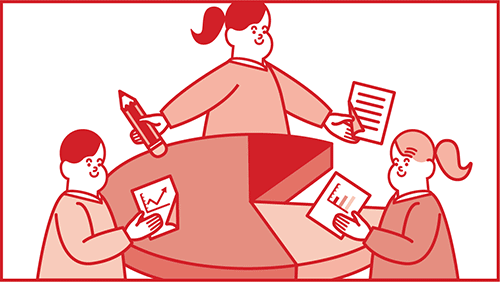Get more! Sign up for PLANSPONSOR newsletters.
The Evolving Nature of TDFs
Since their introduction, TDFs usage has grown to dominate the retirement plan investment landscape, and innovation will continue this growth.
Today, millions of workers invest their retirement savings in target-date funds (TDFs).
TDFs came to shape in the 1990s as an alternative to money market funds (MMFs), often the then default retirement vehicle. When the Pension Protection Act (PPA) was passed in 2006, it was TDFs that investors latched onto.
“The PPA was a big motivator for TDFs, but [qualified default investment alternative (QDIA) regulations] also listed managed accounts and balanced accounts as well,” says Rich Weiss, multi-asset strategies CIO at American Century Investments. “And so, it begs the questions, why did TDFs take off as opposed to those other two?”
While traditionally, MMFs reigned as default investments, it was soon understood that these funds were not appropriate for those who were relatively unsophisticated or had little time and experience to work on their own investing. While MMFs offer less risk, there is little chance for an investor’s money to grow.
“You were almost guaranteed to not have a successful or wealthy nest egg if you left your money in an MMF, because it would lag everything else,” explains Weiss. “The government realized this and then stepped in to move the needle towards something that made more sense.”
When TDFs, balanced funds and managed accounts were presented after the PPA, TDFs were seen as the more sophisticated option out of the three, says Weiss. It’s one-size-fits all structure attracted investors, especially those who had no interest in personalizing or tailoring their investments like a managed account would. Managed accounts were pricier and required more intervention and involvement from the participant themselves. TDFs however, were a balanced, diversified fund that presumed asset allocation is right for every type of investor, at every aspect of their life. They were easy to understand by workers, made sense to financial professionals, and were seen as an advancement over basic balanced funds.
“Historically, a participant that would be invested in a 401(k) would be inappropriately allocated to all-cash or too much equity,” says Armen Apelian, director of Target-Date Strategies at Fidelity Investments. “[The passage of PPA] allowed for our target-date offering to be the default option, with appropriate risk characteristics for age cohorts. This better prepares the participant for retirement.”
The evolution of TDFs from its introduction to today, more than 20 years later, is largely thanks to its big adoption by providers. Fidelity launched its Freedom Funds in 1996, while American Century launched its TDF suite in 2004. Most retirement plan sponsors began utilizing the funds in the early 2000s and TDF usage grew, and for participants involved in those plans, many were opted into TDFs.
“Over the years, TDFs exploded in assets and now you barely find a plan sponsor that doesn’t have a TDF as a QDIA, now it’s more of an opt-out,” says Weiss. “It’s truly a default.”
Apelian adds that while TDFs have become very simple for participants, its construction has been highly complicated. Depending on the provider and plan, each asset allocation is different. The mix of stocks, bonds and cash is a main driver in the investment outcome, so there are a diverse amount of investment vehicles or target-date providers with active building blocks, blend building blocks, and ones that may just be active and passive index funds. In thinking through this, it’s imperative to consider a TDF’s glide path, he says.
“What we’ve learned over the years is, not only is it very important to get this right, but plan sponsors should evaluate the glide path construction process when looking at target-date funds,” Apelian explains.
Looking ahead, Apelian anticipates a continued interest in target-date funds. In the past five years, he’s noticed a move from more active funds, to a mix of active and blend implemented products, as well as TDFs using collective investment trusts (CITs). CITs are priced more competitively at a larger scale.
As managed accounts increase in interest among investors, Weiss does not foresee a dip in TDF investing. While managed accounts allow for better personalization tailored to the investor, he argues that TDFs can also accommodate a worker’s unique situation and risk.
As most providers have 10-, 15- or 20-year track records with TDFs, Weiss expects to see more maturity and complexity in the future of TDFs. With multiple years of experience comes two separate economic periods: the bear market in 2008, and the 10-year bull run after the recession. Therefore, it’s not really 15 years of experience. Rather, it’s two separate episodes. This means that the industry is still fairly young. As it matures, Weiss foresees the adviser community, sponsors and providers transitioning to a more refined outlook when choosing TDF providers. Rather than looking at fees, he expects the industry will lean towards pertinence.
“The metrics for determining which TDF is most appropriate for a sponsor has yet to really evolve, and you’re going to see a lot more of that in the next couple of years,” he concludes. “It’s turning into the concept of appropriateness or suitability, as opposed to just picking a fund based on its five-year performance in fees.”





